Celebrating his first Easter in Detroit, Archbishop Weisenburger baptizes nine, confirms 16 on the holiest night of the year
DETROIT — Crackling flames burning high into the night sky, the Catholic faithful gathered April 19 around the Easter fire in the plaza of the Cathedral of the Most Blessed Sacrament.
The blaze, symbolizing the Light that was to come into the world, was the dominant source of illumination on a cool, crisp spring night as Archbishop Edward J. Weisenburger stood near the Easter candle to inaugurate the most solemn liturgy of the Church’s year.
This year’s Easter vigil — Archbishop Weisenburger’s first as archbishop of Detroit — began with the blessing of the fire and the lighting of the Easter candle, inscribed with the year 2025 and a crucifix, the symbol of Christ’s death by which death itself had been overcome.
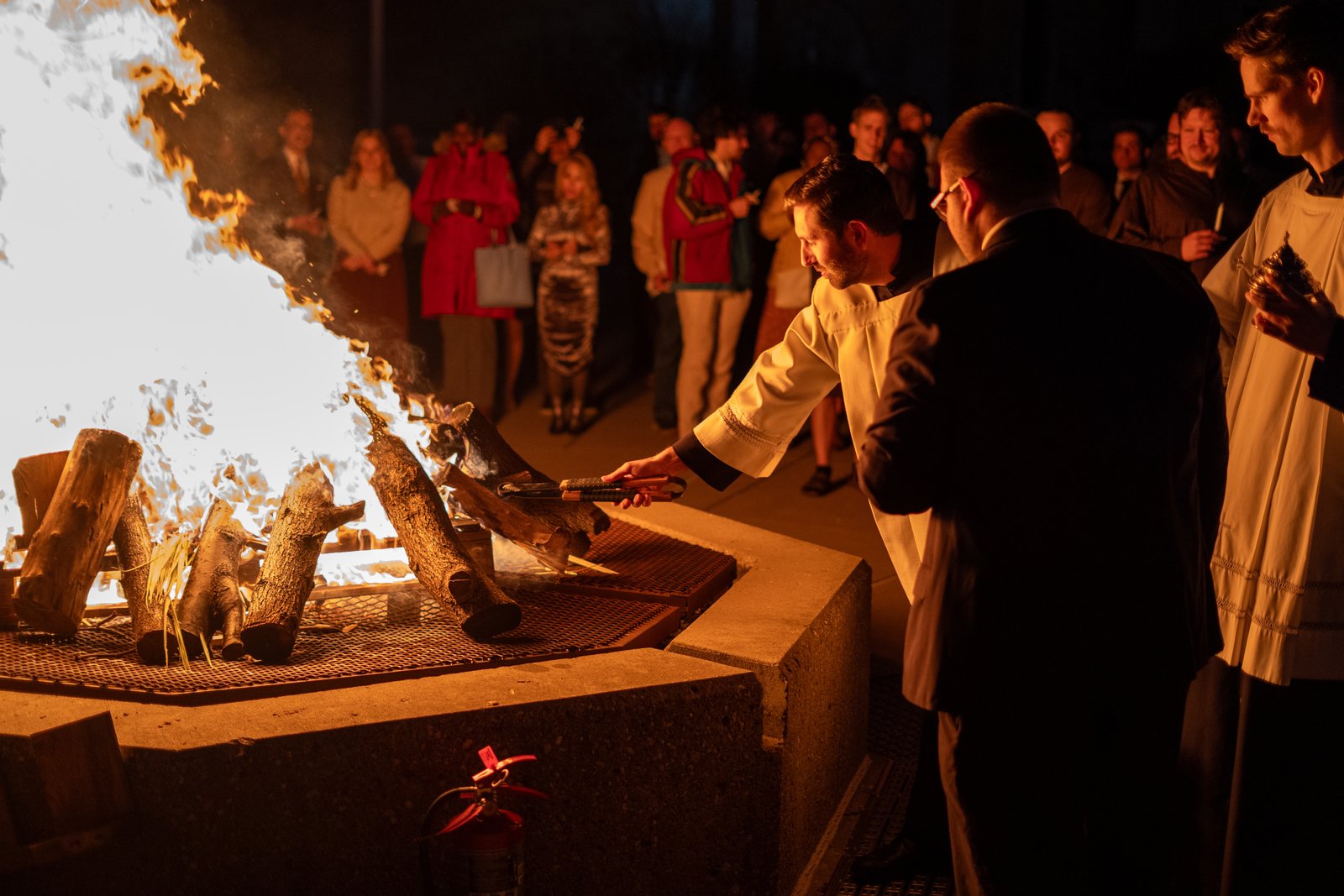
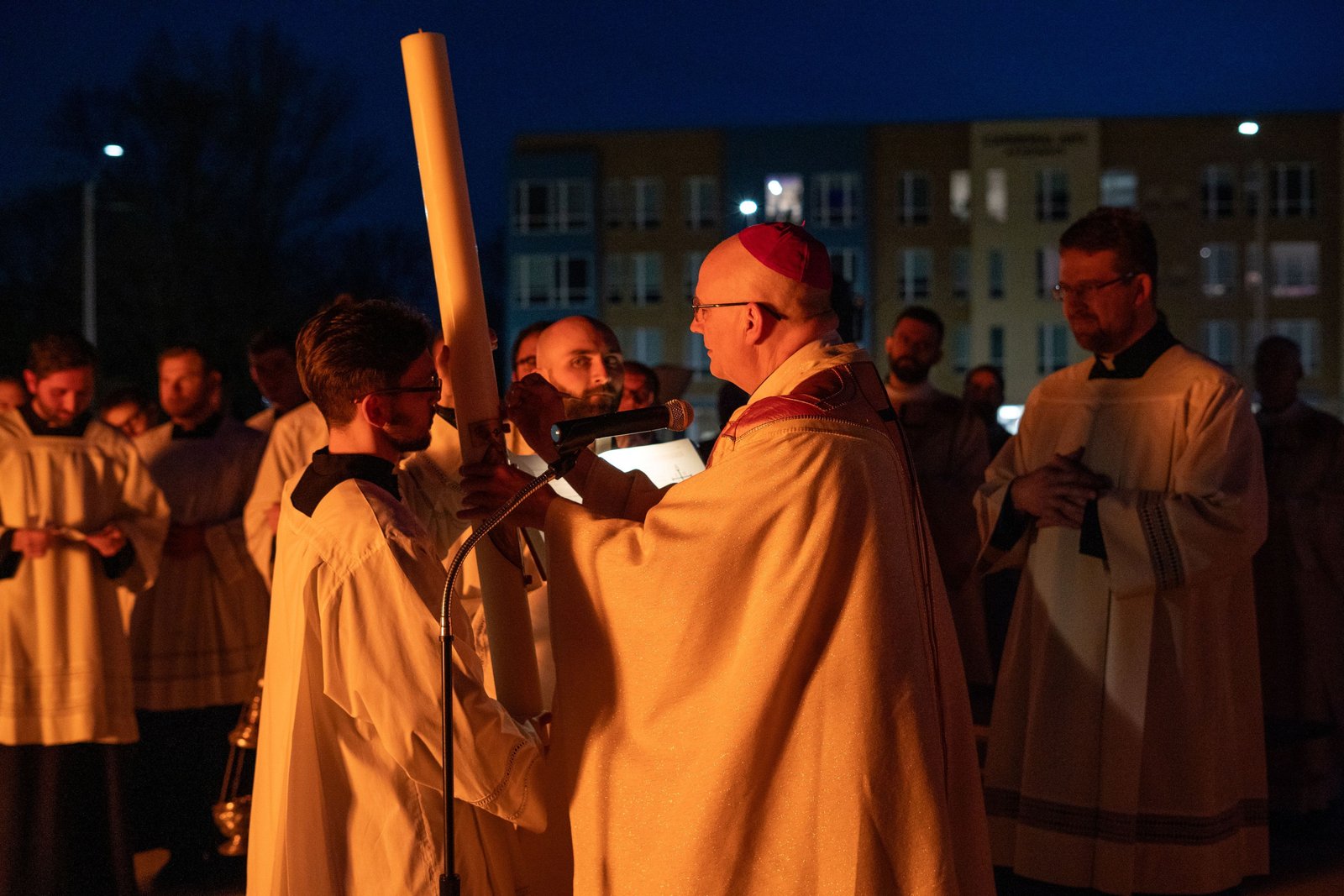
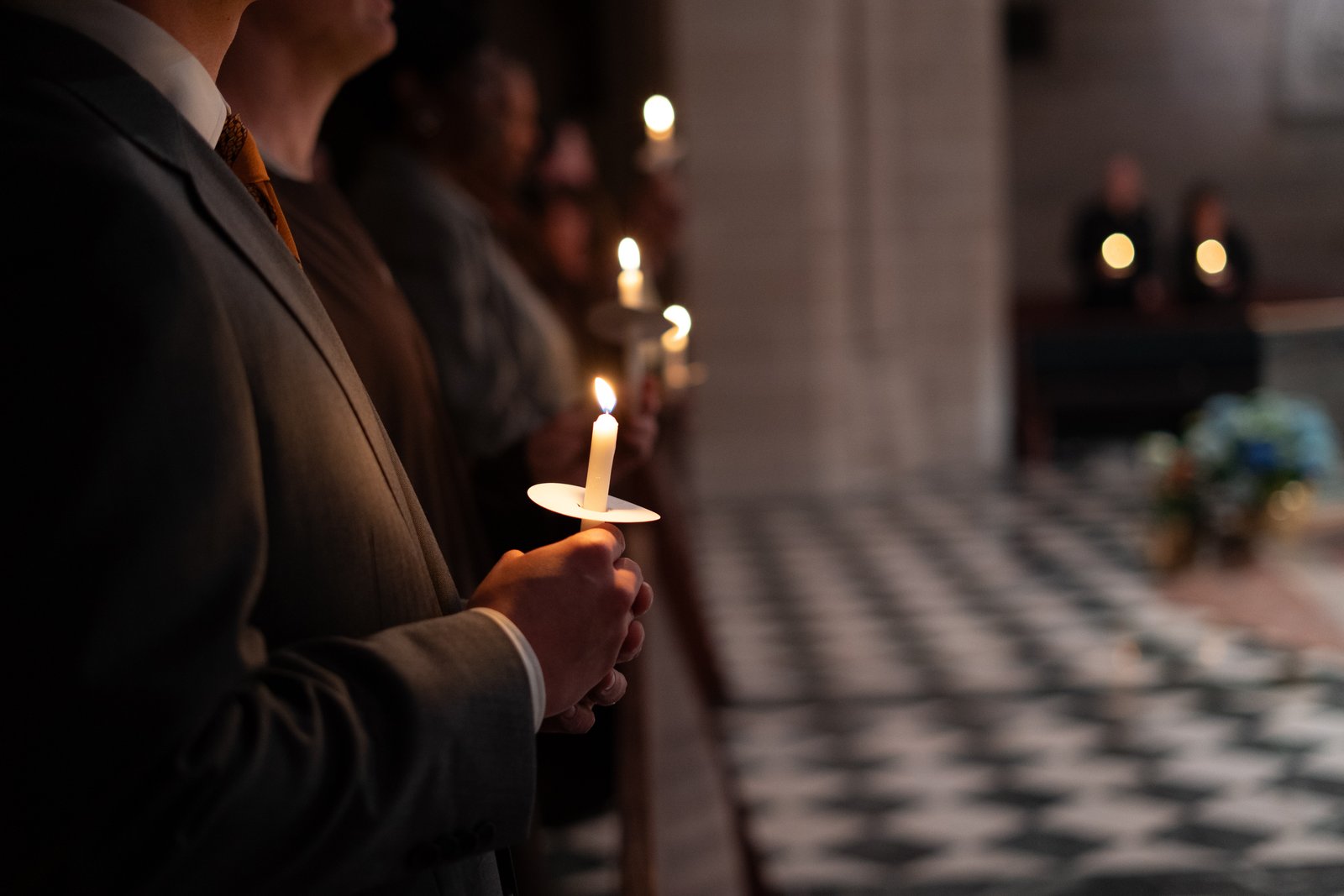

Nine men and women clothed in brown robes stood nearby, eagerly awaiting their entry into the Church — both literally and spiritually — as the procession began toward the front of the cathedral, Archbishop Weisenburger leading with the light, a herald of the risen Christ.
As the Easter candle entered the darkened church and light began to spread, person to person, a threefold cry rang out: “The Light of Christ,” to which a response was heard from within the darkness: “Thanks be to God.”
Soon, the cathedral was awash in orange glow, the faces of those in the pews now visible as the small flames they held flickered, softly illuminating their faces as the Exsultet — the great Easter proclamation announcing God’s powerful deeds through salvation history — was chanted from the sanctuary:
“This is the night
that with a pillar of fire
banished the darkness of sin.
“This is the night
that even now, throughout the world,
sets Christian believers apart from worldly vices
and from the gloom of sin,
leading them to grace
and joining them to his holy ones.”
The Easter vigil at Detroit’s mother Church during the 2025 Jubilee Year of Hope was a moment of great grace and joy, the triumphant entry of God into a world of darkness and sin — a remembrance and re-creation of the first holy night before the dawn of Easter, when Jesus, hidden from the world, dramatically broke the bonds that held the world captive.


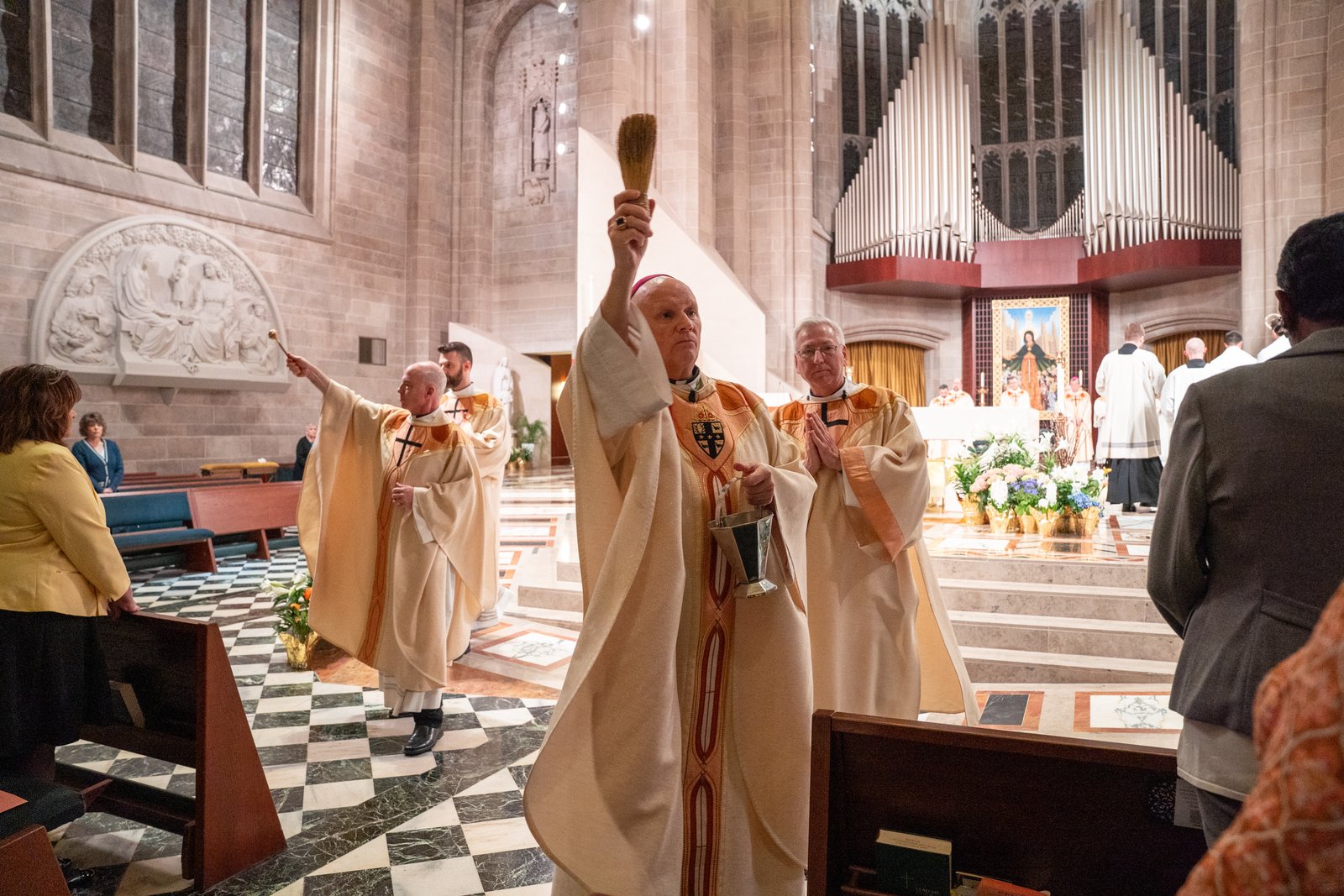
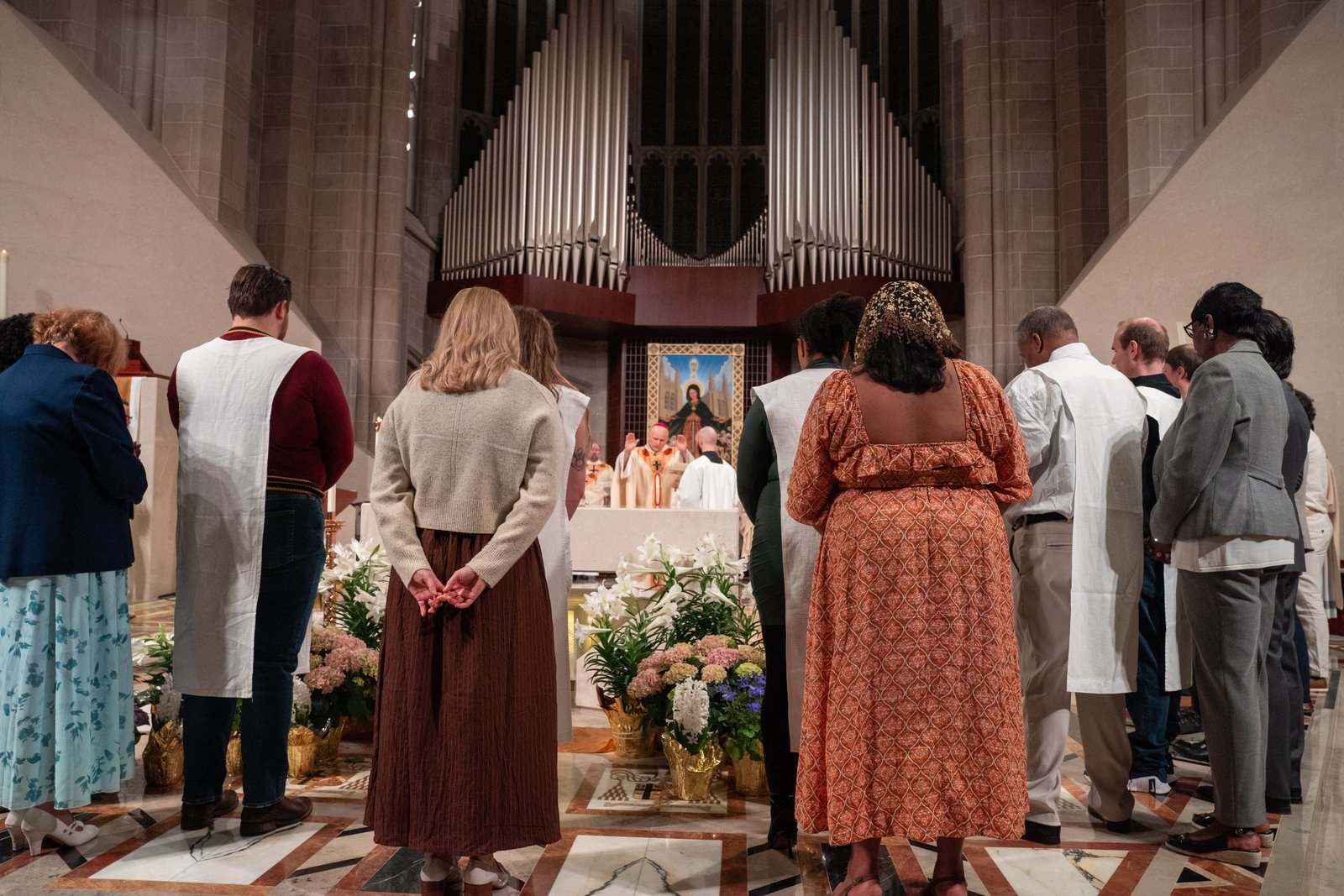
In his homily, Archbishop Weisenburger reminded the faithful that the real Easter — the one Christians so solemnly observe — is not the Easter the secular culture celebrates, but one far more powerful with far greater implications.
“What do we associate with Easter in our culture? Bunnies, eggs, crocuses, robins, cocoons bringing forth butterflies,” Archbishop Weisenburger said. “This week, resurgence of nature is all around us, and we’re quick to say Jesus is like that, a variation of springtime. We liken him all to quickly to the lowly caterpillar wrapped in the cocoon of death, until he emerges as the divine butterfly on Easter Sunday, fluttering all the way to heaven.”
However, he said, the “real Easter” is a story far weightier than the soft and sunny secular holiday.
“Easter is not bunnies and butterflies," the archbishop said. "The real Easter, as one writer once wrote, is about a body that somehow got loose. It’s about a dead Jesus, horribly crucified, who came back to sort of annoy us. Easter is about Jesus, who, while alive, was in ways so radical and countercultural that the prevailing culture killed him."
“Easter butterflies we can handle, but the risen Christ — as present to us as ever — is a little too much,” Archbishop Weisenburger added.
The risen Christ challenges a culture that would rather not be challenged, the archbishop said — a unique voice that rises above political division, racism, poverty, financial scandals and wars, challenging and uniting believers and asking the hard questions.
“To see just how much Jesus is counter to the culture, as well as the Christianity he founded, we need to take an honest and searing look at the Scriptures, at his life and the lives of his real followers,” he said.
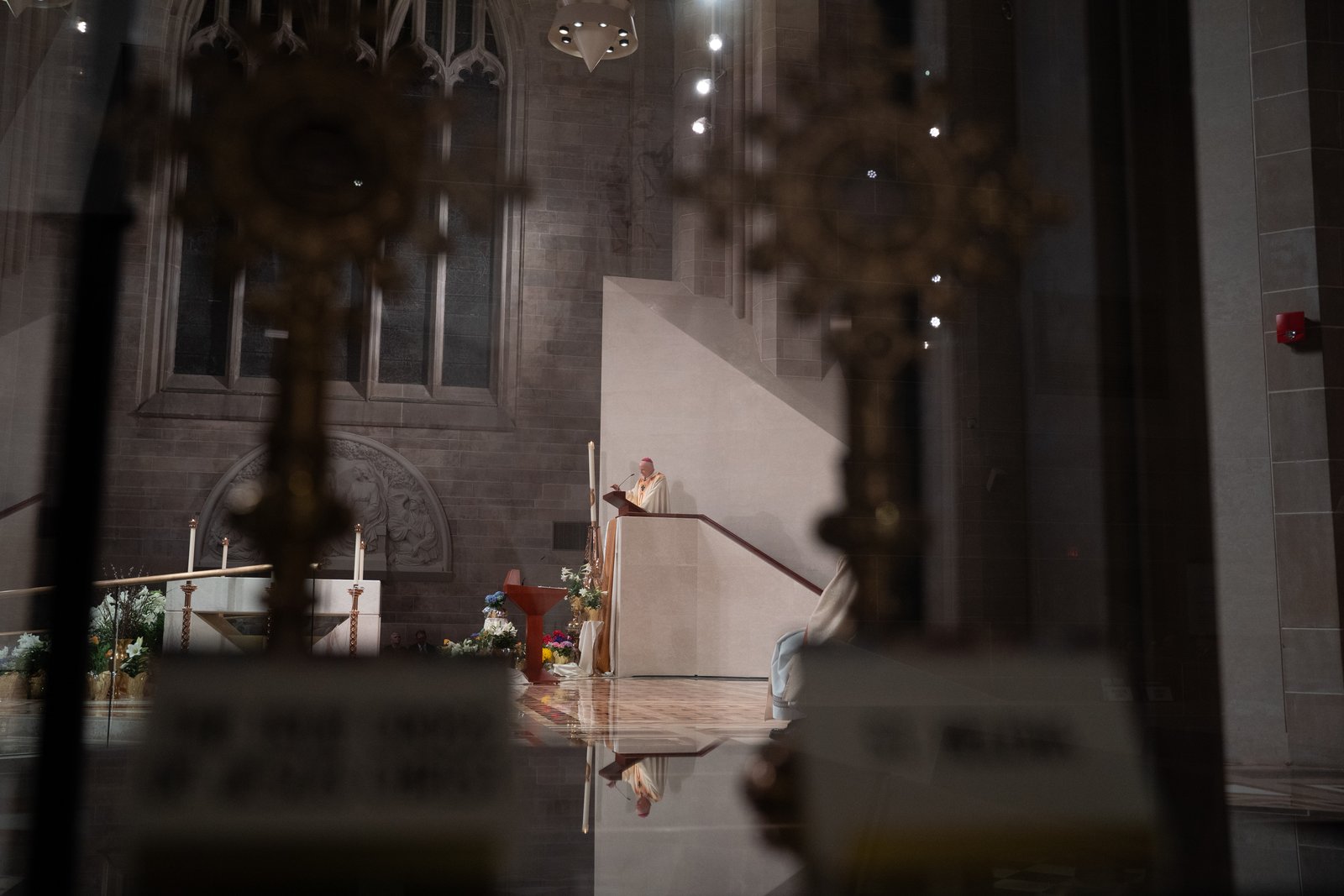

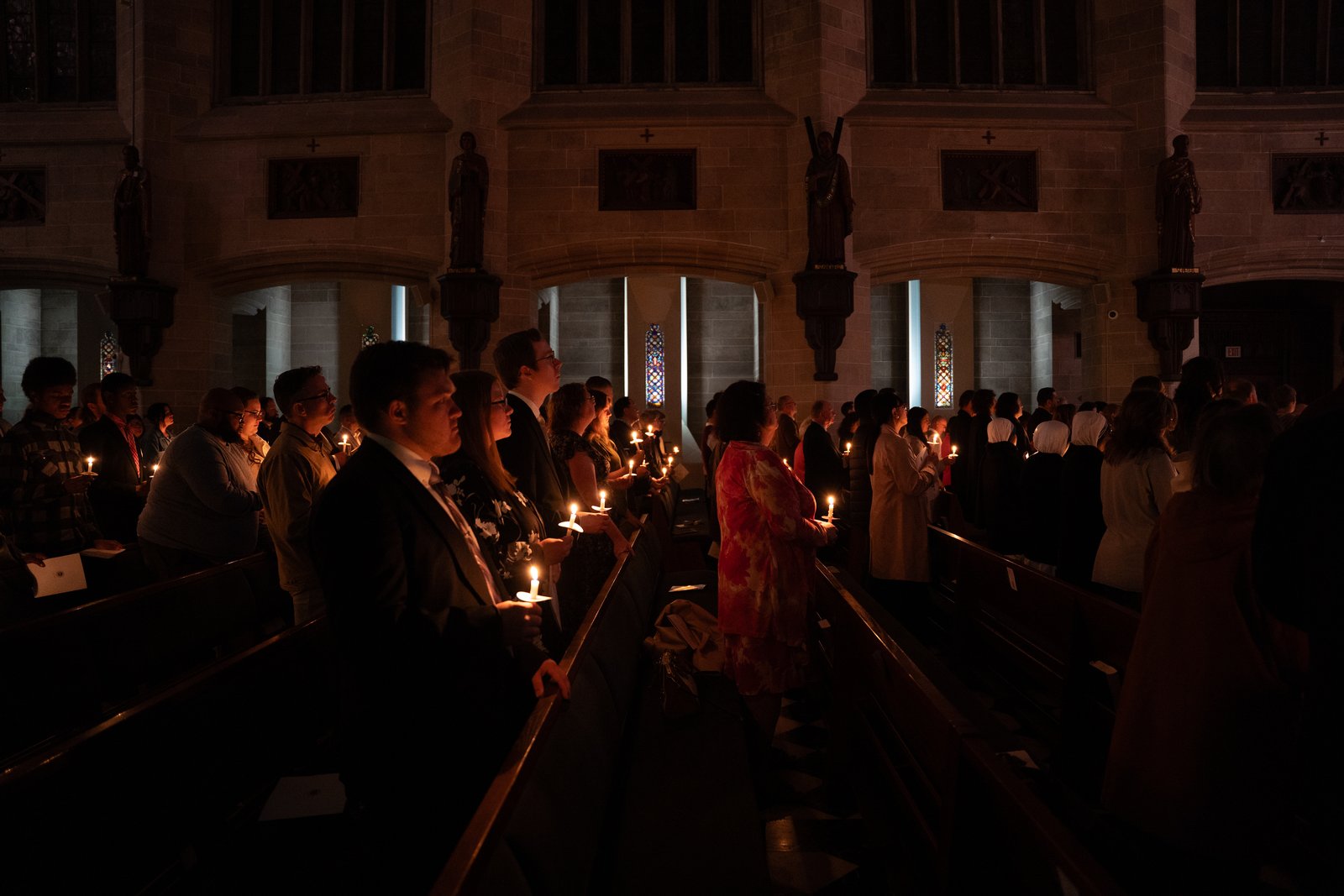

Jesus taught many hard things, Archbishop Weisenburger said, and those hard teachings cannot be separated from the story of Easter.
Jesus spoke of feeding the hungry and giving drink to the thirsty, of storing up treasures in heaven instead of on earth, and seeking first the kingdom of God, the archbishop said.
“Is it Jesus who said, 'It’s easier for a camel to pass through the eye of a needle than for a rich person to enter the kingdom'? I didn’t say that; he said that,” Archbishop Weisenburger said.
“He spoke of forgiving one’s enemies as a condition of being forgiven," the archbishop continued. "He said, ‘We don’t live by bread alone,’ and asked, ‘What profit would it be to gain the whole world and lose our souls in the process?’ He was extraordinarily compassionate to everyone he met and gave everyone a second chance. He said that we were absolutely, without equivocation, to believe in God’s wild, wild love for us, and that each one of us counts for more than all the sparrows in the world.”
But more than just saying those things, Jesus acted on them, the archbishop said, and that’s ultimately what led the world to crucify him.
And yet, he rose.
Jesus’ difficult teachings don’t cease to be difficult after his resurrection, and regrettably, many in the culture — including Christians — choose to ignore these teachings. But the risen Christ remains countercultural, Archbishop Weisenburger said.
“He’s about joy, and a way of life," the archbishop said. "He’s about the decisions we make in business, at school, at home. He’s about honesty and integrity and care for others. He’s actually about ethics and whistleblowing. He’s about chastity and fidelity. He’s about growth and making relationships work. He’s about life — life here, and life hereafter for those who will honestly listen to his voice.”
After the homily, Archbishop Weisenburger led nine catechumens to the baptismal font in the cathedral’s nave, where he blessed the water, dipping the Easter candle three times in the font. He then baptized the nine, who knelt as holy water was poured over their heads, and the Holy Spirit poured into their hearts.
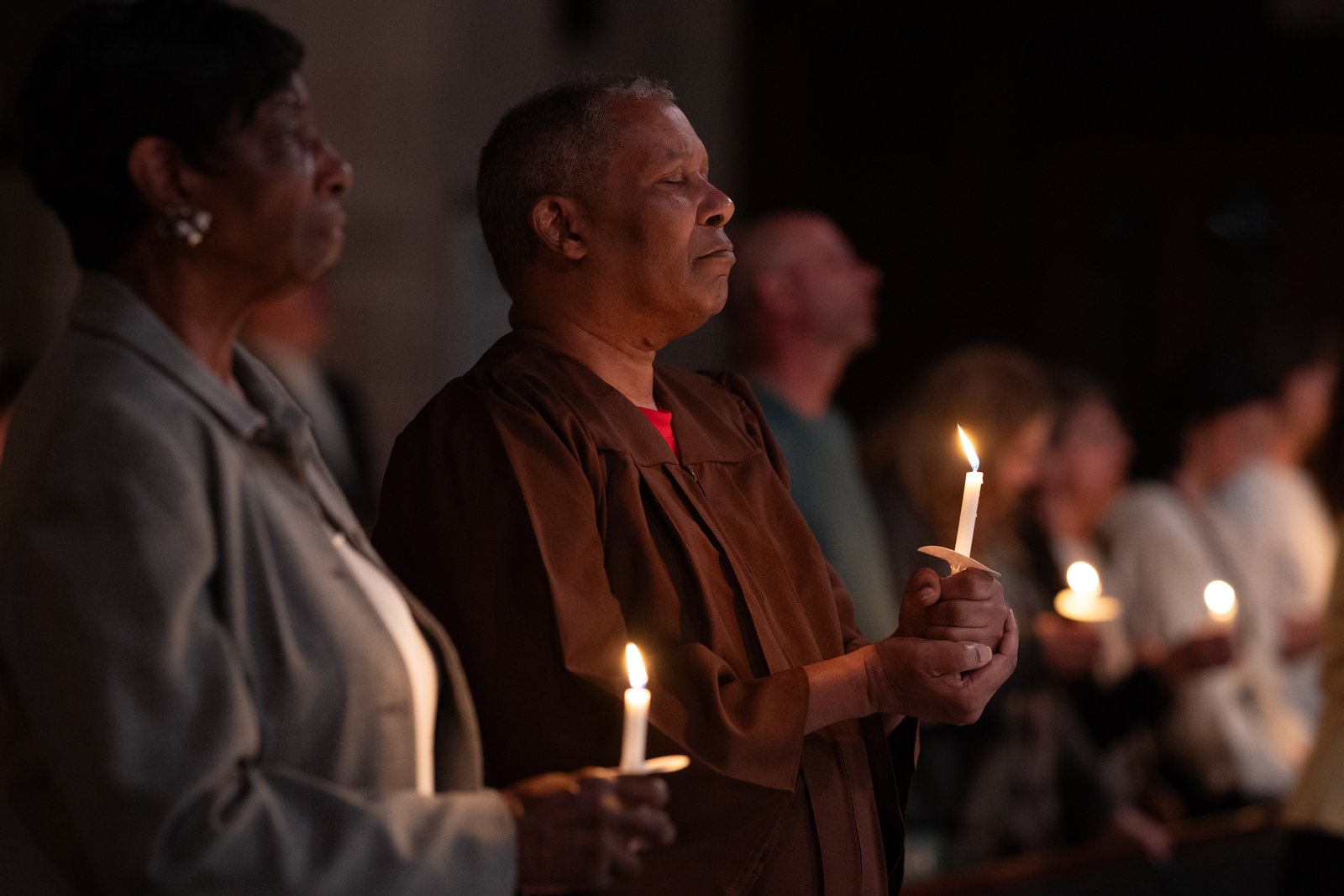
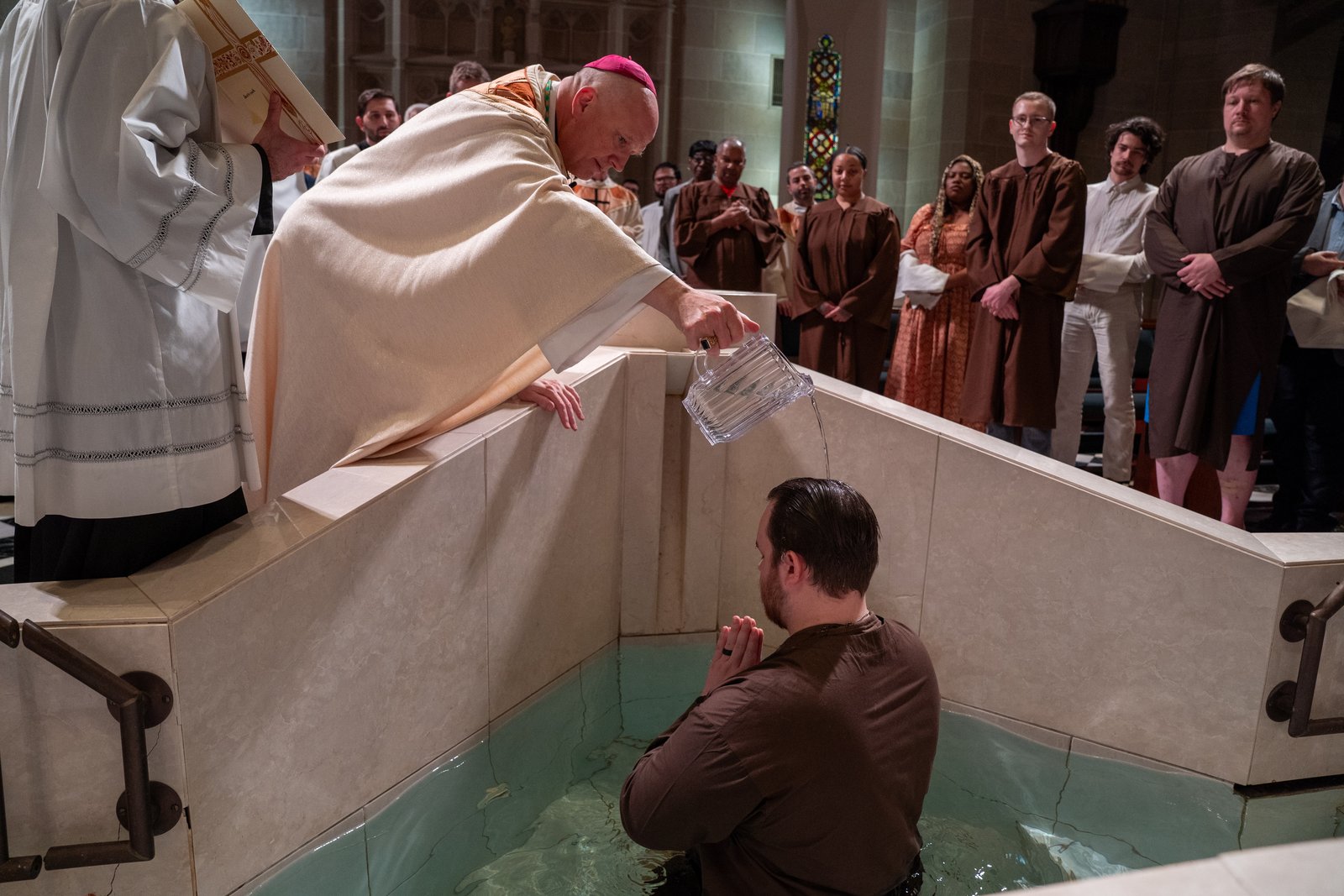
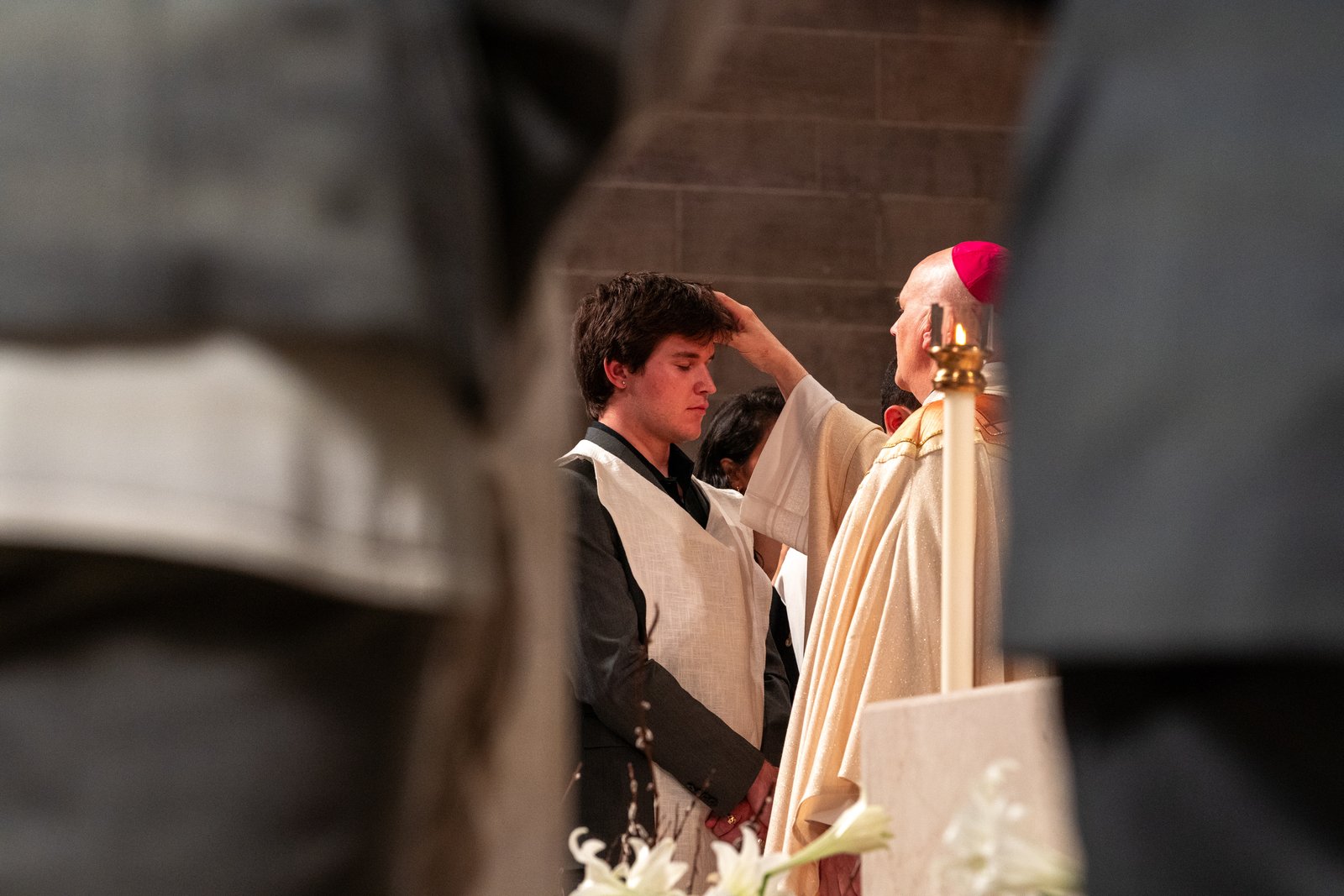

After the baptisms, seven more were presented for confirmation, joining the nine newly baptized members in the cathedral’s sanctuary as Archbishop Weisenburger sealed their foreheads with the sacred Chrism oil.
Meaghan McTaggart, one of the newly baptized, said finally entering fully into the Catholic faith “felt very warm and comforting, like I was home.”
“It was like being wrapped in a blanket,” McTaggart said. “It drew me the closest to God that I’ve ever been. I know He’s been a presence in my entire life, and I’m just so excited to finally confirm it today.”
McTaggart said it was a blessing to be among the first members of the Church in the Archdiocese of Detroit to be baptized by Archbishop Weisenburger.
“I think he’s just a cheerful presence, and I’m really excited that he’s here,” McTaggart said.
Hanuman Durina said his baptism is the culmination of a process of conversion and discernment that ultimately led him and his wife to Detroit’s cathedral parish.
“This church made it really special,” said Durina, whose wife also received the sacrament of confirmation. “I love this community so much. I love Fr. J.J. (Mech, rector of the cathedral) and both of the archbishops; the community was super welcoming.”
As he prayed in preparation for his baptism, Durina said he felt the Lord nudging and helping him to learn to “take the burdens of life in stride.”
“This feels like one of those key moments in my life that I’m going to hold on to for a really long time,” Durina said. “I’ll be making this parish my home, so it’s awesome.”
Copy Permalink
Feast days














